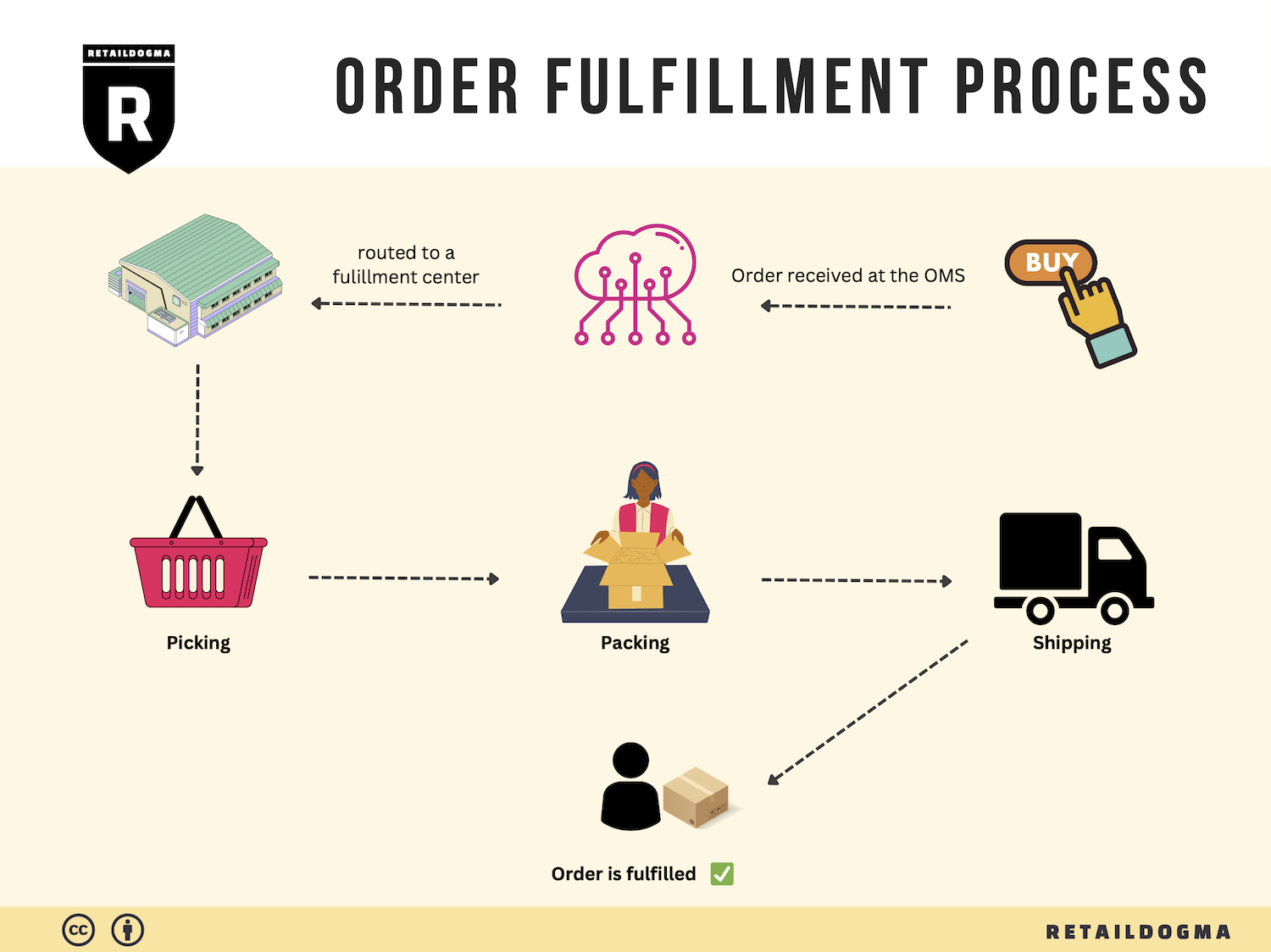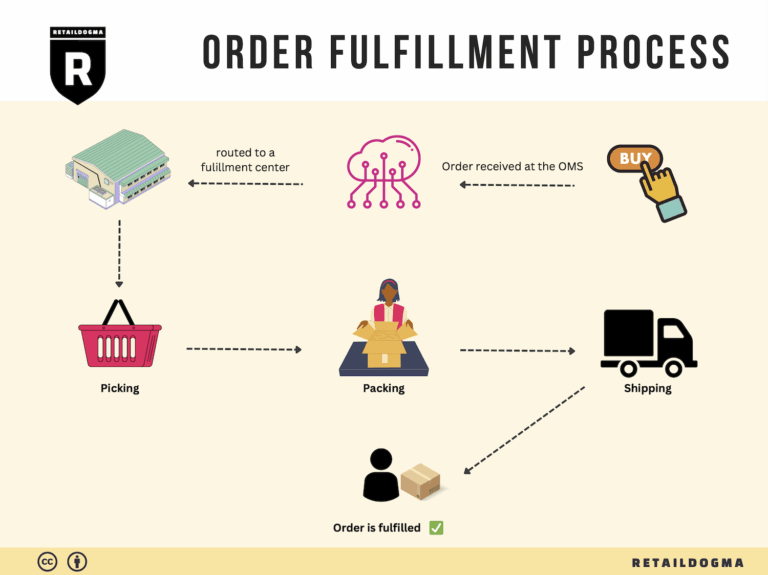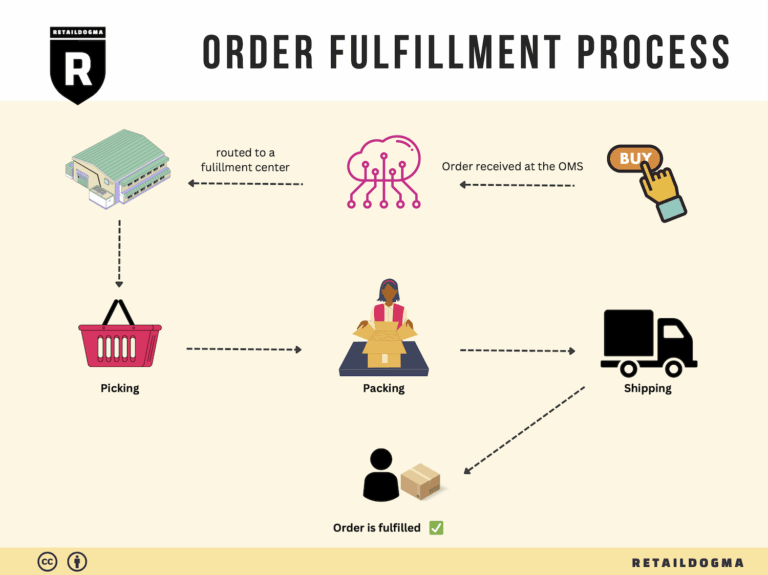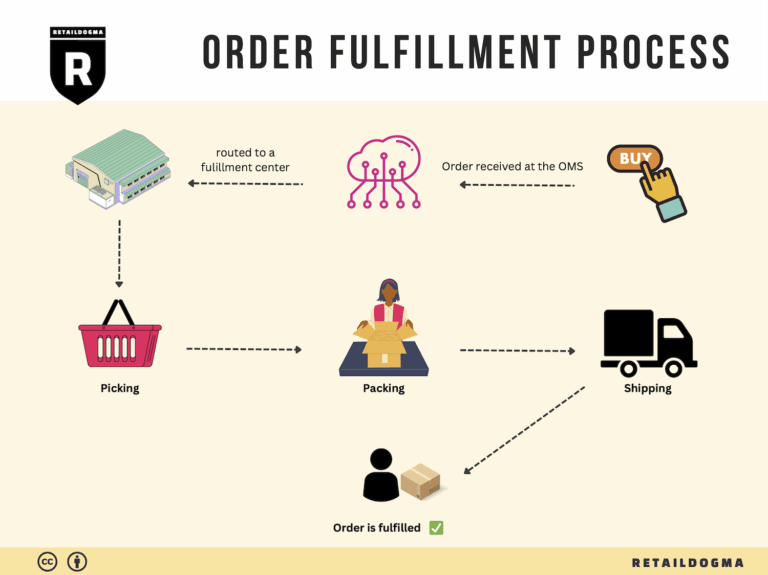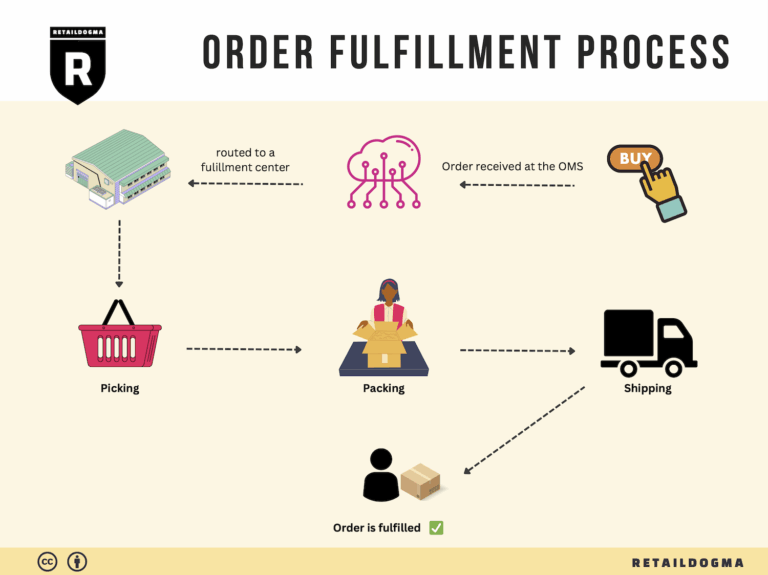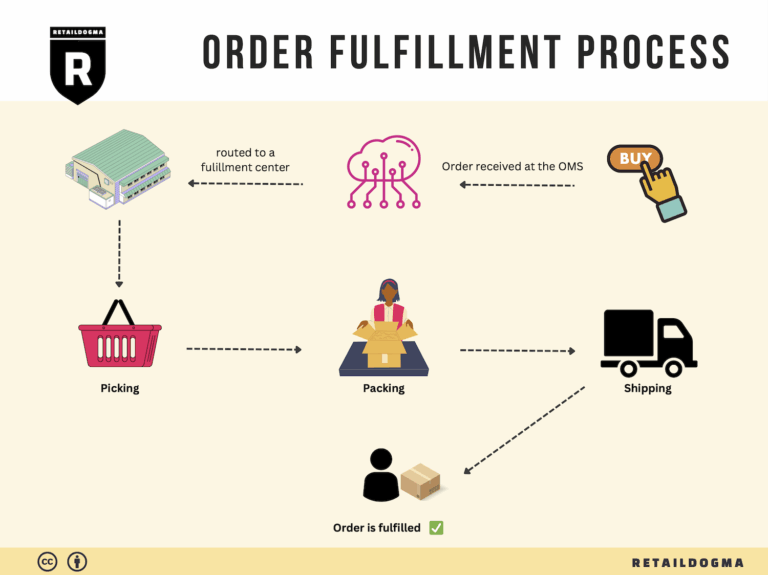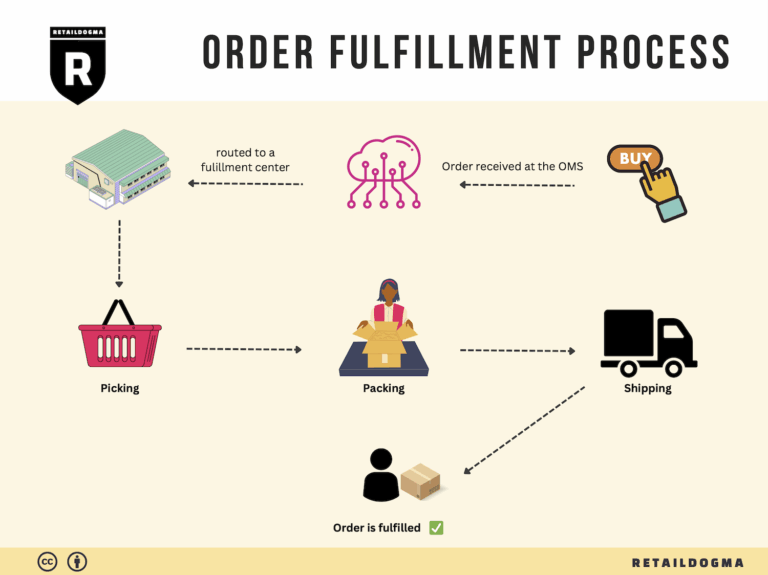What Is A Fulfillment Center? A Complete Guide (2025)
What is E-commerce Fulfillment? An Introduction for Growing Businesses
Understanding E-commerce Fulfillment: A Key to Scaling Your Business
As an e-commerce business owner, one of the most daunting challenges you may face is managing the packing and shipping of orders. The excitement of growing your online sales can quickly turn into overwhelm when faced with the logistical complexities of fulfilling customer orders efficiently and accurately. This is where e-commerce fulfillment comes into play—a crucial process that involves getting your products from your warehouse or supplier to your customers’ doorsteps.
At its core, fulfillment is the entire journey of an order, from the moment a customer clicks “buy” to when they receive their package. This process encompasses inventory management, order processing, packing, shipping, and even handling returns. For growing businesses, mastering fulfillment can be the difference between a seamless customer experience and a logistical nightmare.
In this guide, we will explore the various fulfillment models available to e-commerce businesses, including Third-Party Logistics (3PL) and Fulfillment by Amazon (FBA). Each model offers distinct advantages and can significantly impact your operational efficiency and customer satisfaction. Understanding these models will help you choose the right approach for your business.
We will also delve into the core services that fulfillment providers offer, such as inventory storage, order processing, shipping management, and customer service. Knowing what to expect from your fulfillment partner can help you align their services with your business needs.
Choosing the right fulfillment partner is critical for your success. We will outline key factors to consider when selecting a logistics provider, including location, technology capabilities, scalability, and pricing. Making an informed decision can lead to long-term partnerships that support your growth.
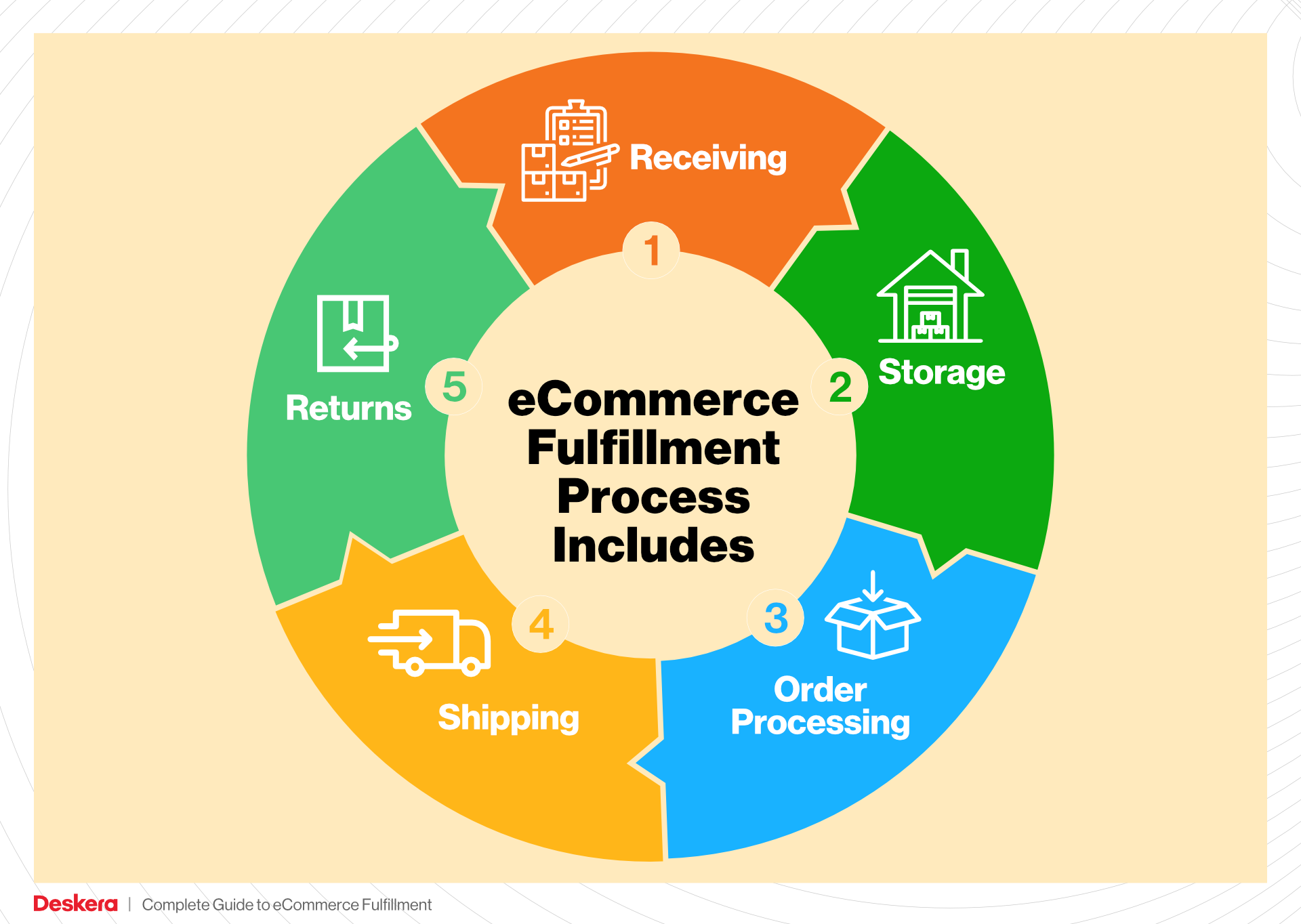
Finally, we will discuss pricing models in fulfillment, helping you understand the costs associated with different services and how to budget effectively. Transparent pricing structures will enable you to manage your expenses while ensuring a high level of service.
The goal of this guide is to empower you with the knowledge needed to make informed decisions about your logistics strategy. By understanding the ins and outs of e-commerce fulfillment, you can streamline your operations, enhance customer satisfaction, and ultimately scale your business with confidence.
What You’ll Learn In This Guide
- What is E-commerce Fulfillment? An Introduction for Growing Businesses
- The Order Fulfillment Process: From ‘Buy’ Button to Customer’s Door
- Comparing Fulfillment Models: In-House vs. 3PL vs. Dropshipping
- A Deep Dive into Amazon FBA: Pros, Cons, and Who It’s For
- Core Services Offered by Fulfillment Centers
- How to Choose a Fulfillment Partner: A 6-Point Checklist
- Understanding Fulfillment Pricing: A Breakdown of Common Fees
- Frequently Asked Questions (FAQs) about Fulfillment
- Conclusion: Is Outsourcing Fulfillment the Right Move for Your Business?
- Important Disclaimer
The Order Fulfillment Process: From ‘Buy’ Button to Customer’s Door
1. Receiving Inventory
The first step in the order fulfillment process is receiving inventory. When products arrive at the fulfillment center, they are checked against purchase orders to ensure accuracy. This involves verifying quantities, inspecting for damage, and recording the items into the inventory management system.
This step is crucial because it sets the foundation for the entire fulfillment process. Accurate receiving helps prevent stock discrepancies, which can lead to order fulfillment errors later on. Key terms associated with this step include SKU (Stock Keeping Unit), which is a unique identifier for each product that facilitates tracking and inventory management.
2. Warehouse Storage
Once the inventory is received and verified, it is stored in designated areas within the warehouse. Efficient storage solutions are essential for maximizing space and ensuring quick access to products. Items are often organized by category or demand frequency, which can be aided by technology such as warehouse management systems (WMS).
The importance of this step lies in its impact on overall efficiency. Proper storage minimizes the time spent locating products, which directly influences order fulfillment speed. A commonly used term in this phase is bin location, which refers to the specific area or slot within the warehouse where a product is stored.
3. Order Picking
When a customer places an order, the next step is order picking, where the required items are retrieved from storage. This process can be executed through various methods, including single order picking, batch picking, or wave picking, depending on the order volume and fulfillment strategy.
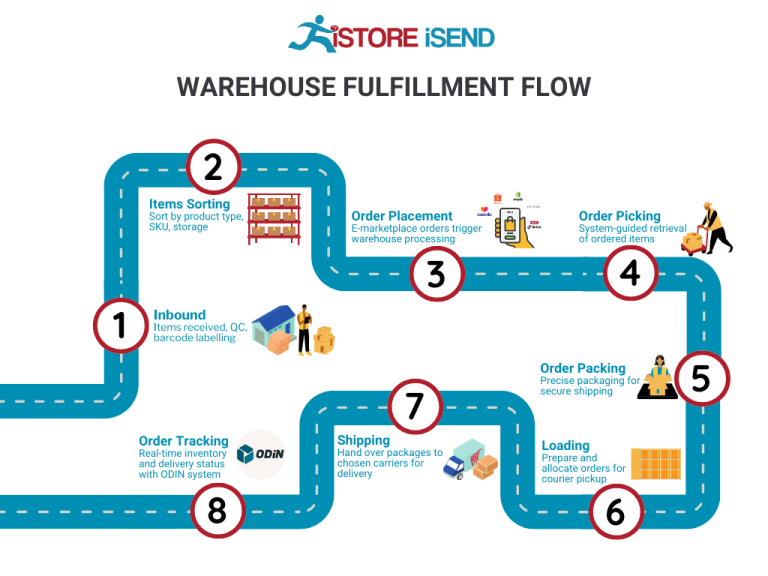
Order picking is critical because it directly affects the accuracy and speed of fulfillment. Mistakes made during picking can lead to incorrect orders, resulting in customer dissatisfaction and increased return rates. A key term to understand here is pick list, which is a document or digital tool that outlines the items to be collected for a specific order, including their locations in the warehouse.
4. Order Packing
After items are picked, they are taken to the packing area, where they are prepared for shipping. This step involves carefully packing products to ensure they are protected during transit. Packing materials may include bubble wrap, foam peanuts, or custom boxes, depending on the nature of the items.
The packing process is vital for preventing damage and ensuring that the order arrives in good condition. Additionally, effective packing can optimize shipping costs by minimizing dimensional weight. A key term in this phase is packing slip, which is a document that accompanies the order and lists the items included, serving as a reference for both the fulfillment center and the customer.
5. Shipping & Delivery
The final step in the order fulfillment process is shipping and delivery. Once packed, orders are labeled and prepared for shipment. This involves choosing the appropriate carrier and shipping method based on factors like cost, speed, and destination. The fulfillment center may utilize various carriers, including UPS, FedEx, and postal services.
This step is crucial as it determines how quickly and reliably the customer receives their order. Efficient shipping processes can enhance customer satisfaction and encourage repeat business. A key term associated with this step is last mile delivery, which refers to the final leg of the delivery journey, often considered the most critical part in terms of customer experience.
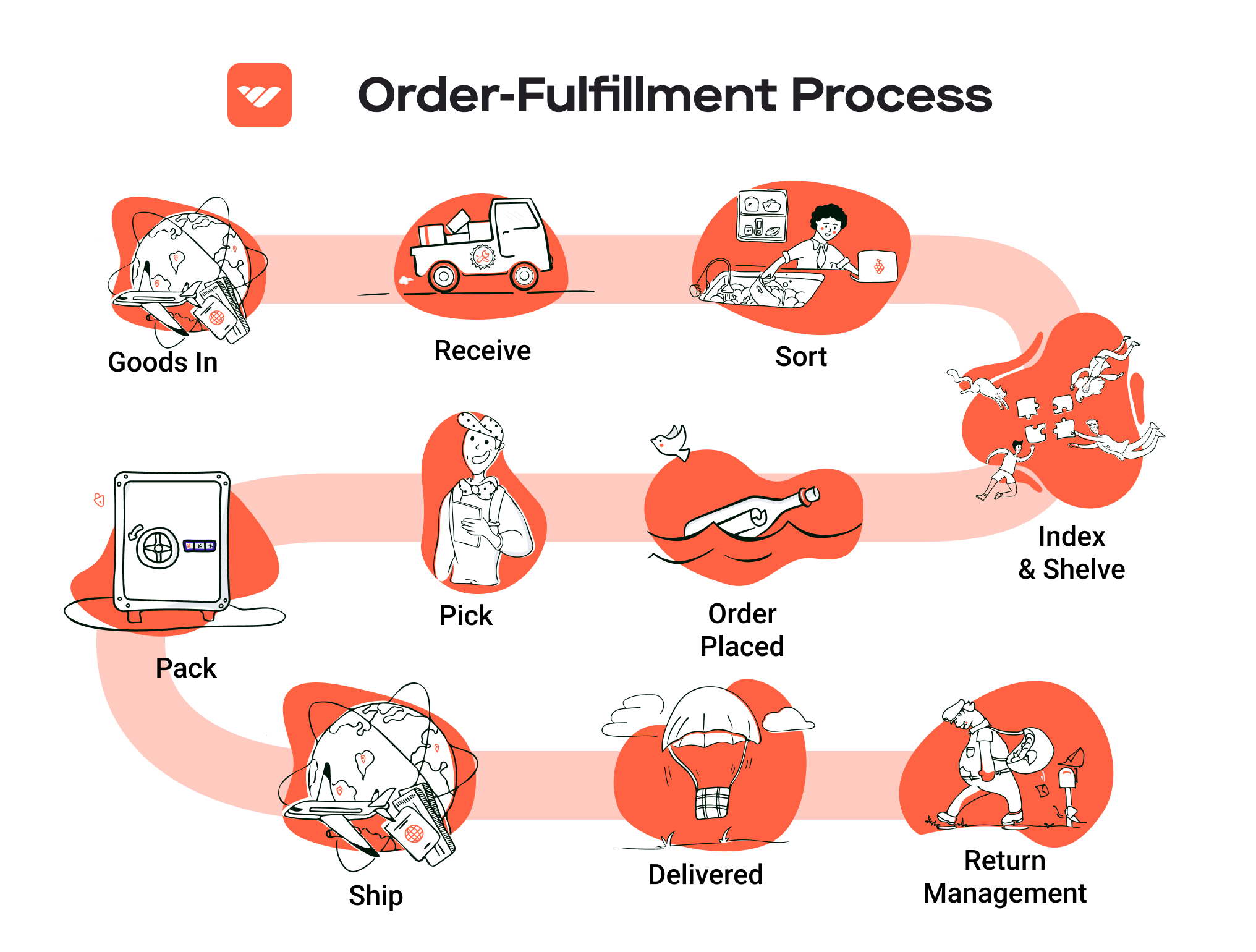
By understanding and optimizing each step of the order fulfillment process, e-commerce businesses can improve efficiency, reduce errors, and ultimately enhance customer satisfaction. Leveraging technology and best practices at each stage is essential for scaling operations effectively in today’s competitive marketplace.
Comparing Fulfillment Models: In-House vs. 3PL vs. Dropshipping
Fulfillment Model Comparison
| Model | Who Handles Inventory | Best For (Business Stage) | Key Advantage | Key Disadvantage |
|---|---|---|---|---|
| In-House Fulfillment | The business itself | Established businesses | Full control over inventory and processes | High overhead costs and resource demands |
| Third-Party Logistics (3PL) | External logistics provider | Growing businesses | Scalability and reduced operational complexity | Less control over inventory management |
| Dropshipping | Supplier/Manufacturer | Startups and small businesses | Low startup costs and no inventory holding | Lower profit margins and reliance on suppliers |
In-House Fulfillment
In-house fulfillment involves managing the entire logistics process within the business itself. This model is best suited for established businesses that have the resources and infrastructure to handle storage, packing, and shipping of products. The key advantage of in-house fulfillment is the complete control it offers over inventory management and the fulfillment process. Businesses can implement their own standards for quality control, packaging, and shipping timelines, which can lead to a more personalized customer experience. However, this model comes with significant disadvantages, including high overhead costs associated with warehousing, staffing, and logistics management. Additionally, it requires a substantial commitment of time and resources, which may divert focus from core business activities, especially for small to medium-sized enterprises looking to scale.
Third-Party Logistics (3PL)
Third-party logistics (3PL) providers manage logistics functions on behalf of businesses. This model is particularly beneficial for growing businesses that are expanding their market reach but may not yet have the capacity to manage logistics in-house. The key advantage of 3PL is scalability; businesses can easily adjust their logistics needs as they grow without the burden of increasing operational complexity. Utilizing a 3PL allows companies to leverage specialized expertise and technology that would be costly to develop in-house, such as advanced inventory management systems and optimized shipping solutions. However, one of the main disadvantages is that businesses relinquish some control over their inventory management. This can lead to challenges in maintaining quality standards or ensuring timely fulfillment, especially if the 3PL does not align perfectly with the company’s operational goals. Furthermore, businesses must carefully select reliable 3PL partners to mitigate risks associated with service quality.
Dropshipping
Dropshipping is a fulfillment model where the retailer does not hold inventory but instead transfers customer orders directly to a supplier or manufacturer, who then ships the products directly to the customer. This model is ideal for startups and small businesses looking to minimize upfront costs and reduce financial risk associated with inventory holding. The primary advantage of dropshipping is its low barrier to entry, allowing entrepreneurs to start selling products without significant investment in inventory or warehousing. It also enables businesses to offer a wide range of products without the need for extensive storage space. However, dropshipping has notable disadvantages, including lower profit margins and increased reliance on suppliers for product quality and shipping times. Retailers may face challenges in maintaining brand reputation if suppliers fail to meet customer expectations. Additionally, the lack of inventory control can complicate order fulfillment, particularly during peak sales periods, which can lead to customer dissatisfaction.
Conclusion
When considering which fulfillment model to adopt, e-commerce businesses must assess their current stage of growth, operational capabilities, and long-term goals. Each model has its unique advantages and disadvantages, and the choice ultimately depends on the specific needs and resources of the business. For established companies with the capacity to manage logistics, in-house fulfillment may provide the best control and flexibility. Conversely, growing businesses may find that partnering with a 3PL allows them to scale efficiently without the complexities of managing logistics themselves. Meanwhile, startups looking to test the market with minimal investment might benefit from the dropshipping model, despite its inherent challenges. Careful consideration and strategic planning will ensure that the chosen fulfillment model aligns with the overall business objectives and customer expectations.
A Deep Dive into Amazon FBA: Pros, Cons, and Who It’s For
Understanding Fulfillment by Amazon (FBA)
Fulfillment by Amazon (FBA) is a service provided by Amazon that allows e-commerce sellers to store their products in Amazon’s fulfillment centers. Amazon then takes care of storage, packaging, shipping, and customer service for these products. This service enables sellers to leverage Amazon’s vast logistics network, enhancing their sales potential and operational efficiency.
How FBA Works
-
Setup: Sellers create an Amazon seller account and enroll in the FBA program. After setting up their account, they can list their products on Amazon.
-
Inventory Preparation: Sellers prepare their products according to Amazon’s guidelines, which may include labeling, packaging, and ensuring products are in sellable condition.
-
Shipping to Amazon: Once products are prepared, sellers ship their inventory to Amazon’s fulfillment centers. Amazon’s system provides shipping plans and addresses for where to send the products.
-
Storage: Upon arrival, Amazon stores the products in their warehouses until they are sold. Sellers can monitor their inventory levels through their Amazon Seller Central account.
-
Order Fulfillment: When a customer places an order for a product, Amazon picks, packs, and ships the item on behalf of the seller. This process typically allows for quick shipping, often with options for same-day or next-day delivery.
-
Customer Service: Amazon also handles customer inquiries and returns, relieving sellers from the burden of customer service management.
-
Payment: Sellers receive payments for their sales, minus Amazon’s fees, which are deducted from their earnings.
Pros of Using FBA
Prime Eligibility
One of the most significant advantages of using FBA is that products become eligible for Amazon Prime. This is crucial as Prime members tend to spend more and expect fast shipping. By leveraging Prime, sellers can enhance their visibility and sales potential significantly.
Customer Trust
Amazon is a trusted name in e-commerce. By using FBA, sellers benefit from this trust, as customers often feel more secure purchasing items that are fulfilled by Amazon. This trust can lead to higher conversion rates and fewer returns.
Multi-Channel Fulfillment
FBA can be used to fulfill orders from various sales channels, not just Amazon. Sellers can integrate their e-commerce websites or other marketplaces with Amazon’s fulfillment services, allowing them to streamline their operations and provide consistent service across platforms.
Scalability
FBA is particularly beneficial for growing businesses. As demand increases, sellers can quickly scale their inventory and operations without the need for additional warehousing or logistics infrastructure.
Simplified Logistics
Managing logistics can be a complex task for any e-commerce business. FBA simplifies this process, as Amazon takes care of storage, shipping, and returns. This enables sellers to focus on other critical aspects of their business, such as marketing and product development.
Cons of Using FBA
High Fees
While FBA offers many conveniences, the associated fees can be significant. Sellers are charged storage fees for the space their inventory occupies, as well as fulfillment fees for each item sold. These costs can eat into profit margins, especially for low-priced items.
Strict Inventory Rules
Amazon has specific inventory management rules that sellers must adhere to. This includes limitations on how much inventory can be stored and strict policies on inventory performance metrics. Failure to comply can result in additional fees or inventory removal.
Commingling Risks
FBA uses a system called commingling, where products from different sellers are stored together. This can lead to issues if a customer receives a damaged or defective product that is not from the original seller. In such cases, sellers may face challenges in addressing returns or issues related to product quality.
Limited Control
Sellers relinquish a degree of control over their inventory and shipping processes when using FBA. While Amazon handles these aspects efficiently, it may not always align with a seller’s brand or customer service philosophy.
Inventory Visibility
Once inventory is in Amazon’s fulfillment center, sellers may have limited visibility and control over their stock levels and fulfillment processes. This can complicate inventory management and forecasting, particularly during peak seasons.
Who is FBA Best For?
Fulfillment by Amazon is ideal for a range of sellers, particularly:
-
Small to Medium-Sized Businesses: Businesses looking to scale quickly without investing heavily in logistics infrastructure can benefit significantly from FBA.
-
Sellers with High Volume: Those who sell products that can move quickly and have a higher turnover rate will find FBA advantageous due to the economies of scale.
-
Brands Wanting to Leverage Amazon’s Trust: New or lesser-known brands seeking to establish credibility can benefit from the trust associated with Amazon and the Prime badge.
-
Multi-Channel Sellers: Businesses that sell across multiple platforms can streamline their logistics by utilizing FBA for all their fulfillment needs.
-
Sellers of Non-Seasonal Products: Those with products that sell year-round can better manage costs associated with storage and fulfillment.
In conclusion, Fulfillment by Amazon can be a powerful tool for e-commerce sellers looking to streamline their operations and enhance their sales potential. However, it is crucial to weigh the pros and cons carefully, ensuring that the model aligns with the seller’s business strategy and operational capabilities. By understanding how FBA works and the implications it has on their business, sellers can make informed decisions that drive growth and profitability.
Core Services Offered by Fulfillment Centers
Inventory Management & Warehousing
Effective inventory management is the backbone of any successful e-commerce operation. Fulfillment centers like Amazon’s PVD2 offer robust inventory management systems that streamline the storage and tracking of products. These facilities utilize advanced technology, including automated systems and software, to monitor stock levels, track product movements, and forecast demand.
Benefits:
– Real-time Visibility: Business owners gain access to real-time data regarding their inventory levels, which helps in making informed decisions about restocking and managing supply chains effectively.
– Space Optimization: Fulfillment centers are designed to maximize storage capacity, allowing businesses to store a larger variety of products without the overhead costs associated with owning and maintaining a warehouse.
– Scalability: As your business grows, fulfillment centers can easily accommodate increased inventory needs without requiring significant investment in additional space or resources.
Pick and Pack Services
The pick and pack service is a crucial component of the fulfillment process, where products are selected from inventory and packaged for shipment. Fulfillment centers employ trained staff and sophisticated technology to ensure accuracy and efficiency in this process.
Benefits:
– Speed: Fulfillment centers can significantly reduce the time it takes to process orders. With a dedicated team and automated systems, orders can be picked, packed, and shipped within hours, ensuring that customers receive their products quickly.
– Accuracy: By utilizing barcodes and scanning technology, fulfillment centers minimize the risk of errors in order fulfillment. This accuracy leads to higher customer satisfaction and fewer returns due to incorrect items being shipped.
– Cost Efficiency: Outsourcing pick and pack services to a fulfillment center allows e-commerce businesses to save on labor costs and operational overhead, enabling them to focus on core business activities such as marketing and product development.
Kitting and Assembly
Kitting and assembly services involve grouping individual items into ready-to-ship sets or preparing products for sale. This could include assembling items, bundling products, or creating promotional packages. Fulfillment centers like PVD2 can manage these processes seamlessly, providing a valuable service for businesses with complex product offerings.
Benefits:
– Customization: E-commerce businesses can offer customized product bundles or kits that meet specific customer needs, enhancing the overall shopping experience and increasing average order value.
– Efficient Workflow: By managing kitting and assembly in-house, fulfillment centers can streamline operations, reducing the time from production to shipping. This efficiency can be a significant competitive advantage during peak seasons.
– Reduced Complexity: Outsourcing kitting and assembly allows businesses to simplify their operations, reducing the need for in-house labor and resources dedicated to these tasks. This enables companies to focus on core competencies while the fulfillment center handles the logistical complexities.
Returns Management (Reverse Logistics)
Returns management, also known as reverse logistics, is an essential service offered by fulfillment centers. This process involves handling customer returns, restocking items, and managing the reverse flow of goods back into inventory. Effective returns management can greatly influence customer satisfaction and retention.
Benefits:
– Streamlined Process: Fulfillment centers provide a structured approach to handling returns, ensuring that products are processed quickly and efficiently. This can involve inspecting returned items, repackaging, and restocking them in inventory.
– Customer Satisfaction: A smooth returns process is crucial for maintaining customer trust and loyalty. Fulfillment centers can facilitate easy return procedures, making it more likely that customers will shop again despite having to return an item.
– Data Insights: Analyzing return data can provide valuable insights into customer preferences and product quality issues. Fulfillment centers often have the tools to analyze this data, helping businesses make informed decisions about product offerings and inventory management.
In summary, fulfillment centers like Amazon’s PVD2 provide a suite of core services that can significantly enhance the efficiency and effectiveness of e-commerce operations. From inventory management to returns processing, leveraging these services allows businesses to scale effectively while maintaining a high level of customer satisfaction.
How to Choose a Fulfillment Partner: A 6-Point Checklist
Location & Warehouse Network
Importance:
The location of your fulfillment partner’s warehouses is crucial for timely delivery and cost efficiency. A strategically located warehouse can significantly reduce shipping times and costs, especially if it is situated near major transportation hubs or your customer base.
Questions to Ask:
– Where are your warehouses located, and how do they align with my customer demographics?
– What is your average shipping time to major regions?
– Do you have a network of warehouses that can support regional distribution?
Technology & Integrations
Importance:
In today’s e-commerce landscape, technology plays a vital role in streamlining operations. A fulfillment partner with advanced technology can provide real-time inventory management, order tracking, and automated processes that enhance efficiency.
Questions to Ask:
– What technology platforms do you use for inventory management and order processing?
– Can your systems integrate with my existing e-commerce platforms (like Shopify, WooCommerce, or Amazon)?
– Do you offer real-time tracking for shipments and inventory levels?
Specializations (e.g., Cold Storage, Oversized Items)
Importance:
Different products have unique storage and handling requirements. If your business involves specialized items—such as perishables that require cold storage or oversized products—you’ll need a partner that can accommodate these needs.
Questions to Ask:
– What specializations do you offer in terms of storage and handling?
– Are your facilities equipped for specific types of products, such as temperature-sensitive items or bulky goods?
– Can you provide examples of how you’ve successfully handled similar products for other clients?
Scalability & Capacity
Importance:
As your business grows, your fulfillment needs will change. It’s essential to partner with a fulfillment center that can scale operations in line with your growth—whether that means increasing capacity during peak seasons or expanding services as you introduce new products.
Questions to Ask:
– What is your current capacity, and how can it be adjusted to meet my future needs?
– Do you have systems in place to manage seasonal fluctuations in order volume?
– How quickly can you scale operations if my business experiences rapid growth?
Pricing and Contracts
Importance:
Understanding the cost structure of your fulfillment partner is vital to ensure that it aligns with your budget and profitability goals. Transparent pricing helps avoid unexpected costs and ensures that you can plan your finances effectively.
Questions to Ask:
– What are your pricing models (e.g., per order, per item, monthly fees)?
– Are there any additional fees I should be aware of (e.g., storage fees, pick-and-pack fees)?
– What is the length of your contracts, and what are the terms for cancellation or modifications?
Customer Support & Reviews
Importance:
Reliable customer support can significantly impact your operations. When issues arise—such as shipping delays or inventory discrepancies—having a responsive support team can help resolve problems quickly and maintain customer satisfaction.
Questions to Ask:
– What levels of customer support do you offer (e.g., dedicated account managers, 24/7 support)?
– Can you provide references or case studies from current or past clients?
– What is your process for handling customer inquiries and resolving issues?
Conclusion
Choosing the right fulfillment partner is a critical step in scaling your e-commerce business. By using this checklist, you can ensure that you evaluate potential partners thoroughly and make an informed decision that aligns with your operational needs and growth ambitions. Remember, a well-chosen fulfillment partner can not only enhance your logistics capabilities but also contribute to your overall customer experience and business success.
Understanding Fulfillment Pricing: A Breakdown of Common Fees
Initial Setup Fees
Initial setup fees are often the first costs you encounter when partnering with a fulfillment center like Amazon’s PVD2. These fees cover the onboarding process, which may include account setup, integration with your existing e-commerce platform, and training on how to use the fulfillment services. Typically, these fees can range from a few hundred to several thousand dollars, depending on the complexity of your operations and the level of support you require.
To calculate these fees, fulfillment centers usually consider the size of your inventory, the number of SKUs you plan to manage, and the specific services you need. It’s advisable to ask for a detailed breakdown of what the setup fee entails to ensure you understand the value you’re receiving.
Receiving Fees
Receiving fees are charged for the process of accepting and storing your inventory at the fulfillment center. This fee is typically based on the volume of products received and can be calculated per pallet or per unit.
For instance, if you send a shipment of 100 pallets, the receiving fee may be calculated by multiplying the number of pallets by the fee per pallet. Some fulfillment centers also have minimum fees for smaller shipments, which can add to your costs if you frequently send small quantities.
When discussing receiving fees, clarify how they will charge for damaged or mislabeled items, as these can incur additional costs.
Storage Fees (per pallet/bin)
Storage fees are ongoing costs associated with keeping your inventory in the fulfillment center. These fees are usually calculated on a monthly basis and can vary based on the size of your inventory—often billed per pallet or per bin.
The cost may also fluctuate depending on the season; for example, during peak holiday seasons, storage fees can increase due to higher demand for space. It’s essential to understand the billing cycle and any potential penalties for exceeding your allocated storage space.
To effectively manage storage fees, regularly review your inventory levels and consider implementing an inventory management strategy that minimizes excess stock.
Pick & Pack Fees (per item/order)
Pick and pack fees are incurred when the fulfillment center picks items from your inventory and packs them for shipment. These fees are typically calculated per item or per order, depending on the fulfillment center’s pricing structure.
For example, if you have an order containing three different items, you may be charged a pick fee for each item picked, plus a packing fee for the order. The total cost can add up quickly if your orders frequently contain multiple SKUs.
To optimize these fees, consider consolidating orders where possible, as bulk orders may reduce the per-item pick fee. Additionally, discuss any volume discounts with your fulfillment provider.
Shipping Fees
Shipping fees are the costs associated with transporting your products from the fulfillment center to your customers. These fees can vary widely based on the shipping method chosen (standard, expedited, etc.), the destination, and the dimensions and weight of the package.
Fulfillment centers often provide negotiated shipping rates with carriers, which can be beneficial for e-commerce businesses. Understanding the shipping fee structure is crucial, as it can significantly impact your overall fulfillment costs.
To minimize shipping fees, consider using a multi-carrier strategy and regularly evaluate different shipping options. Look for opportunities to leverage flat-rate shipping or regional carriers, especially if you’re frequently shipping to specific areas.
Tips for Getting an Accurate Quote
-
Provide Detailed Information: When requesting a quote, be as specific as possible about your inventory size, order volume, and fulfillment needs. This will help the provider give you a more accurate estimate.
-
Ask for Itemized Quotes: Request an itemized breakdown of all potential fees, including setup, receiving, storage, pick & pack, and shipping. This transparency will help you avoid unexpected costs later.
-
Inquire About Discounts: Many fulfillment centers offer discounts for higher volumes or long-term contracts. Don’t hesitate to ask about any available savings.
-
Review Terms and Conditions: Carefully read the terms related to fees, especially regarding storage limits, minimum order quantities, and penalties for exceeding limits.
-
Plan for Seasonal Variations: If your business experiences seasonal fluctuations, discuss how fees may change during peak periods and plan accordingly.
By understanding these common fulfillment pricing models and following these tips, you can effectively manage costs and optimize your e-commerce operations as you scale your business.
Frequently Asked Questions (FAQs) about Fulfillment
1. What is the Amazon fulfillment center PVD2?
PVD2 is a state-of-the-art Amazon fulfillment center located in Johnston, Rhode Island. This facility is designed to process and ship customer orders efficiently, utilizing advanced robotics and a skilled workforce. It spans 3.8 million square feet and is expected to create over 1,500 full-time jobs, enhancing local economic growth.
2. How does the fulfillment process work at PVD2?
The fulfillment process at PVD2 involves several key steps: receiving inventory, storing products, picking items from shelves based on customer orders, packing them securely, and shipping them to customers. The facility employs both technology and human workers to streamline operations, ensuring quick and accurate order fulfillment.
3. What is the difference between a warehouse and a fulfillment center?
A warehouse primarily serves as a storage space for products, whereas a fulfillment center is a specialized facility focused on processing customer orders. Fulfillment centers are equipped with systems and processes designed to pick, pack, and ship items efficiently, often integrating technology to enhance speed and accuracy.
4. What is a 3PL, and how does it relate to fulfillment services?
A 3PL, or third-party logistics provider, is a company that manages logistics operations on behalf of another business. This can include warehousing, inventory management, order fulfillment, and shipping. Utilizing a 3PL can help e-commerce businesses scale by outsourcing their logistics needs, allowing them to focus on core operations such as marketing and product development.
5. How much do fulfillment services cost?
Fulfillment service costs can vary widely based on factors such as the volume of orders, size and weight of products, and specific services required (e.g., storage, packing, shipping). Generally, businesses can expect to pay a combination of storage fees, picking fees per item, and shipping costs. It’s advisable to request quotes from multiple providers to compare pricing and services.
6. What types of products can be fulfilled at PVD2?
PVD2 is equipped to handle a wide range of products, from electronics and household goods to clothing and health products. However, there are restrictions on certain items, such as hazardous materials or perishables. Businesses should consult Amazon’s guidelines to ensure their products are eligible for fulfillment at this facility.
7. How can small businesses benefit from using the PVD2 fulfillment center?
Small businesses can leverage the capabilities of PVD2 to enhance their logistics operations without the overhead costs of maintaining their own fulfillment infrastructure. By utilizing Amazon’s extensive logistics network, they can improve shipping speed, reach a broader customer base, and compete more effectively on the Amazon platform.
8. What technology is used in the PVD2 fulfillment center?
PVD2 employs advanced robotics and automation technology to optimize the fulfillment process. This includes automated storage and retrieval systems, conveyor belts, and software that manages inventory and order processing in real-time. This technology helps increase efficiency, reduce errors, and speed up order delivery.
9. Can businesses track their inventory and orders at PVD2?
Yes, businesses utilizing PVD2 can track their inventory and orders through Amazon’s seller dashboard. This platform provides real-time data on stock levels, order status, and shipping information, enabling sellers to manage their operations effectively and respond promptly to customer inquiries.
10. What are the operational hours of the PVD2 fulfillment center?
While operational hours may vary based on specific business needs and peak seasons, Amazon fulfillment centers typically operate 24/7 to accommodate high order volumes, especially during busy periods such as holidays. Businesses should consult with their Amazon representatives for detailed information about operational hours and staffing at PVD2.
Conclusion: Is Outsourcing Fulfillment the Right Move for Your Business?
Evaluating the Benefits of Outsourcing Fulfillment
Outsourcing your fulfillment process can be a transformative decision for your e-commerce business. By leveraging the capabilities of a fulfillment service, you can save significant time and resources that would otherwise be spent managing logistics. This allows you to focus on core business activities such as marketing, product development, and customer engagement. A well-chosen fulfillment partner can provide the expertise needed to navigate the complexities of shipping, warehousing, and inventory management, ensuring that your products reach customers quickly and efficiently.
Scalability is another crucial benefit of outsourcing fulfillment. As your business grows, so do your logistics needs. A fulfillment service can easily scale alongside your operations, accommodating spikes in order volume during peak seasons or product launches without the need for substantial capital investment in infrastructure. This flexibility is vital for maintaining a competitive edge in the fast-paced e-commerce landscape.
However, it’s essential to choose the right fulfillment partner to support your growth. Not all services are created equal; consider factors such as their technology capabilities, location, and customer service track record. A partner with a robust logistics network—like Amazon’s PVD2 fulfillment center—can enhance your operational efficiency and improve customer satisfaction.
Call to Action
Now is the time to evaluate your current shipping and fulfillment processes. Conduct a thorough audit to identify bottlenecks, inefficiencies, and areas for improvement. Ask yourself: Are you maximizing your resources? Could a fulfillment partner enable you to scale more effectively? By taking this strategic step, you can determine if outsourcing fulfillment is the right move to drive your business forward.
Important Disclaimer
⚠️ Important Disclaimer
The information in this guide is for educational purposes. Fulfillment services, pricing, and platform features change frequently. Always conduct your own due diligence and consult with providers directly before making business decisions.
